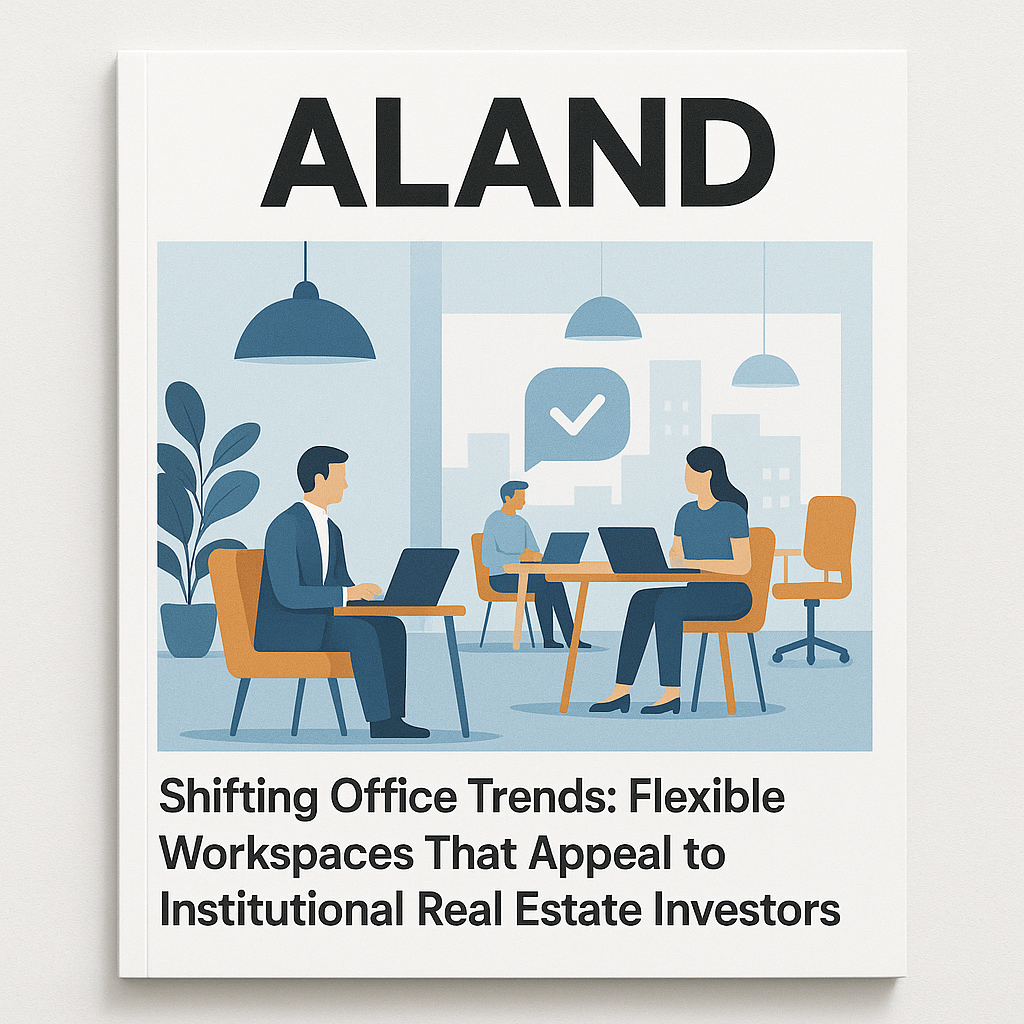Shifting Office Trends: Flexible Workspaces That Appeal to Institutional Real Estate Investors
- Published Date: 27th Jul, 2025
-
4.8★ ★ ★ ★ ★(93)

Listen to the podcast for this article
The traditional office landscape is undergoing a profound transformation driven by evolving work habits, technological advancements, and shifting tenant demands. Institutional real estate investors are increasingly drawn to flexible workspace solutions as a strategic response to these trends. Dr. Pooyan Ghamari, Swiss economist and founder of the ALand Platform, underscores that flexibility, adaptability, and technology integration are now core pillars for office assets to maintain long-term value and attract high-caliber tenants.
The Rise of Flexible Workspaces and Changing Tenant Preferences
The surge in remote and hybrid work models has redefined how companies utilize office space. Instead of fixed leases for large, static offices, organizations seek flexible workspaces that accommodate fluctuating team sizes, support collaboration, and provide advanced amenities. These spaces range from co-working hubs and serviced offices to modular, tech-enabled environments.
Dr. Ghamari notes that institutional investors favor properties with adaptable layouts and flexible lease terms because they can attract a broader tenant base, reduce vacancy risks, and achieve more stable cash flows.
Economic Drivers Behind Flexible Office Investments
Economic uncertainty, technological disruption, and a growing emphasis on employee well-being are accelerating the demand for versatile office environments. Flexible workspaces foster productivity, innovation, and employee retention—key factors that corporate tenants prioritize.
The flexibility in lease durations and scalable space usage appeals to startups, SMEs, and large enterprises alike. This broad market appeal translates into more diversified tenant portfolios for investors, reducing dependency on a single tenant or sector. According to data on ALand’s Blog, flexible office assets often achieve higher rental premiums and increased occupancy rates compared to traditional offices.
Technology as a Differentiator in Flexible Office Offerings
The integration of smart building technologies, IoT devices, and AI-driven space management systems enhances the tenant experience and operational efficiency. The ALand Platform enables landlords to implement digital solutions such as app-based workspace booking, real-time occupancy monitoring, and predictive maintenance—features highly valued by tenants.
Technology also supports sustainability goals through optimized energy management, further boosting the ESG profile of flexible office properties—a crucial consideration for institutional investors seeking responsible investments.
Strategic Advantages for Institutional Investors
Flexible office spaces provide several strategic benefits:
-
Resilience Against Market Fluctuations: Adaptability to changing tenant needs mitigates vacancy risks during economic downturns.
-
Enhanced Tenant Retention: Flexible contracts and amenities improve tenant satisfaction and reduce turnover.
-
Premium Pricing: Demand for plug-and-play office solutions allows landlords to command higher rents.
-
Portfolio Diversification: Access to a wider tenant spectrum, including freelancers, startups, and multinational corporations.
Dr. Ghamari emphasizes that investors leveraging digital platforms to manage these assets gain superior insights and control, optimizing returns while enhancing tenant engagement.
Practical Steps for Investors and Developers
-
Prioritize Retrofit and Design: Convert existing buildings into flexible layouts with modular furniture and adaptable meeting spaces.
-
Invest in Technology: Implement smart systems for booking, security, and building automation via platforms like ALand.
-
Emphasize Sustainability: Integrate green certifications and energy-efficient solutions to attract ESG-focused tenants and investors.
-
Develop Hybrid Leasing Models: Offer short-term, scalable leases that accommodate diverse tenant profiles.
-
Monitor Market Trends: Use data analytics to anticipate demand shifts and tailor offerings accordingly.
Explore insights on flexible workspaces and institutional investment strategies at ALand’s Blog, utilize advanced management tools on the ALand Platform, and stay informed with the latest developments through The ALand Times.
Engage with these resources to harness emerging office trends and maximize your real estate portfolio’s potential.

